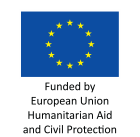The expected results are:
- long-term PTHA (complete hazard curves), i.e. exceedance probability for different runup or wave-height thresholds, at points distributed along the NEAM coasts;
- regional hazard maps (hazard intensity with given exceedance probability, e.g. for sizing of shelters, design/reinforcement of buildings and CIs);
- probability maps (probability corresponding to given intensities, e.g. for selecting tolerance levels for mitigation actions, evacuation planning, locating CIs);
- website for sharing information on activities, documentation, data, results;
- technical documentation and guidelines, on data analysis and PTHA methods;
- awareness-raising materials (multilingual website, printed materials, contents for media), and capacity building tools (web-based analysis tool; guidelines; meetings with stakeholders and authorities interactive web-tools). In particular, the final TSUMAPS-NEAM meeting will be held in a Southern Neighbourhood country. We will immediately: develop a common approach to PTHA; increase awareness of authorities, stakeholders, media, and general public; diffuse expertise among scientists and authorities of Enlargement and Neighbourhood countries. In the medium-to-long term, we favour: research on uncertainty reduction and continuous PTHA update; cross-border diffusion of a knowledge-base for local risk assessments, toward land-use/evacuation planning, tsunami building codes, identification of exposed CIs. The combination of awareness raising and base-knowledge sharing with CPAs, will enhance the interaction between CTSPs and local authorities, thus making NEAMTWS more effective.
